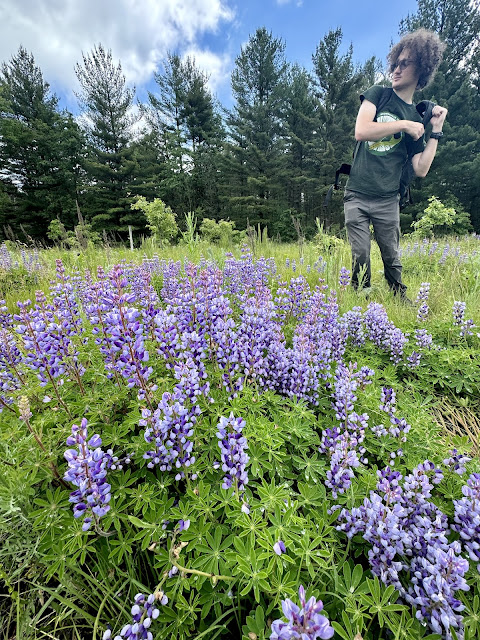I’ll be honest, I’m really bad at finding eastern hognose snakes (Heterodon platyrhinos). I haven’t spent a ton of time searching for them, but for me they are disproportionately more frustrating to find than just about any other species. In the Chicago region of Illinois, the hognose snake is by no means a common snake, but with time and effort, it’s certainly not impossible to find. Again, I’m just bad at it.
Further south, they can be found in greater numbers in the right habitat. And up north, they are perhaps even more conspicuous. While a lot of southern Wisconsin is under intense agriculture, the state has preserved sizable natural areas including sand areas and marshes. This benefits hognose snakes, the amphibians they eat, and a myriad of other species.
Braden is a naturalist from Wisconsin that I’ve known through social media for a few years. He invited me up for an outing during which we would target this species. We were to collect data on any hognose snakes found to provide to one of the state’s top herpetologists. The target area is one that has seen some changes in recent years - changes which have the potential to adversely impact hognose snake numbers.
On the way to the first site, I witnessed a lot of big snapping turtles (Chelydra serpentina) on the road. All but one were dead. It never fails to surprise me how many of these large, lumbering creatures are hit by vehicles, especially on a rural two-lane road with adequate shoulder space and low traffic. The live turtle I witnessed had already laid eggs on the side of the road and was trapped by concrete barriers. I moved her off of the road and halfway down a grassy embankment toward the river, hoping she’d continue working herself toward the creek and not back up to near certain death.
I then met with Braden at the first location and we hiked to a sand savanna. It was cool, and cloudy - not good conditions for hognose snakes but great for photos of the stunning array of wildflowers and butterflies.
It didn't take long for us to notice the spongy moth caterpillars - and LOTS of them. Until recently known as the gypsy moth, the spongy moth is incredibly invasive and has wreaked havoc throughout the United States. This sand savanna was particularly affected - entire oak trees defoliated, as well as other herbaceous vegetation under attack. There had to be millions of these caterpillars in this one area alone. Left unchecked, these insects have the potential to destroy every oak on the site. It was very disheartening for both of us to witness this.
One of the aforementioned changes to the area is a relatively new path that bisects the sand savanna. Unlike most of the savanna, which is well vegetated, the path is loose exposed sand. Just the right place for a hognose snake to lay its eggs. Put two and two together and you’ll understand why this can be problematic. Recent anecdotal evidence suggests that the hognose snake may be declining in this area. Without a well-planned study, all anyone can do is argue correlation/causation - but in any case, blazing a trail through this sensitive habitat probably wasn’t the smartest move.
After about an hour and a half, the sun made an appearance, and the temperature steadily climbed. The herbaceous vegetation, wet from recent rains and dew, began to dry. Our chances of finding a hognose snake were looking better and better, yet our eyes didn’t cross paths with any. We decided to try another spot a few miles away and began walking toward our cars via a set of railroad tracks. With his gaze trained on the sandy embankment off to the side, it wasn’t long before Braden excitedly announced the sighting of a hognose snake. Right there, exiting a hole next to the tracks. Isn’t that how it always works? Spend all the time in the world in the “appropriate” habitat only to be skunked, and then finding what you’re looking for in a purely anthropogenic habitat (see source-sink dynamics).
This was the first wild eastern hognose snake I’ve seen since 2015. Needless to say, I was excited, and the discovery led to a much-needed energy boost. We took a few photos and some environmental data before leaving the snake right where it was. And if you’re wondering if it feigned death, well, yes. Limp as a noodle following minimal hands-on interaction. I’m still not sure how this behavior benefits an animal that is preyed upon by other animals that include carrion in their diets, but it must help in some way.
We had plans to visit a few other nearby sites that Braden had scouted on Google maps. We were met with varying levels of satisfaction at the remaining sites - some weren’t exactly as Braden had hoped and one in particular was promising. At any rate, the hognose represented our final find. But we really enjoyed the morning spent in nature and I especially enjoyed Braden’s company. This will certainly not be our last rodeo.










